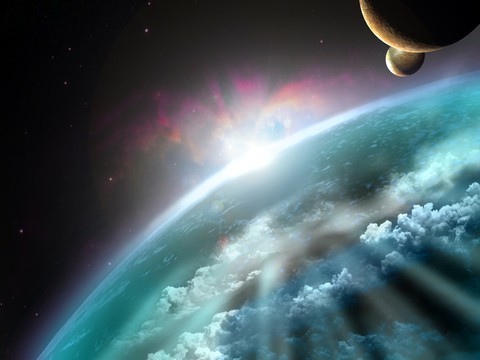They are very excited about this discovery at NASA because of its implications for other similar planets:
“This discovery does confirm that Earth-sized planets do exist in the habitable zones of other stars,” Quintana said during a Thursday news briefing at NASA Headquarters.
Kepler-186f goes around an M-type dwarf star that’s smaller and cooler than our sun. But it orbits much closer to its parent star than Earth does, within what would be Mercury’s orbit in our own solar system. Those two factors combine to produce an environment that could allow for liquid water on the surface, assuming that the planet had a heat-trapping atmosphere.
What do you think could this planet harbor extraterrestrial intelligence? Or perhaps kepler 452-b?
The fact that these conditions are so relatively similar to our, if nothing else warrants further examination/
How would you suggest searching for evidence?

2 hyper commercial pages to click through to get to a NOVA episode, WTF?
I don’t know. Have they detected some signs of photosynthesis?
I doubt it, the planet orbits so close to its star that it would be tidelly locked. Which means that one side always faces the star and the other side away. One side would be in perpetual darkness while the other perpetual day plus it won’t have a magnetic field.
What by any means do you think any other life forms can’t inhabit these planets? We base life off of our miniscule perspective here. And we are supposedly a few chromosomes from being chimps. Most humans are ignorant monkeys… But that aside why do you possibly think “other” life couldn’t… We are the bottom of the totem pole in terms of the universe.
Not at the bottom, but we’re stupid for certainty. We’re definitely the most destructive force, however. We’re a melting pot of different views and it sucks that we can’t be shown the true nature of the universe because it would do two things: destroy those who can’t come to terms with the truth and then unite those of us who can.